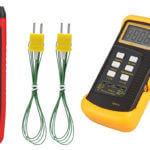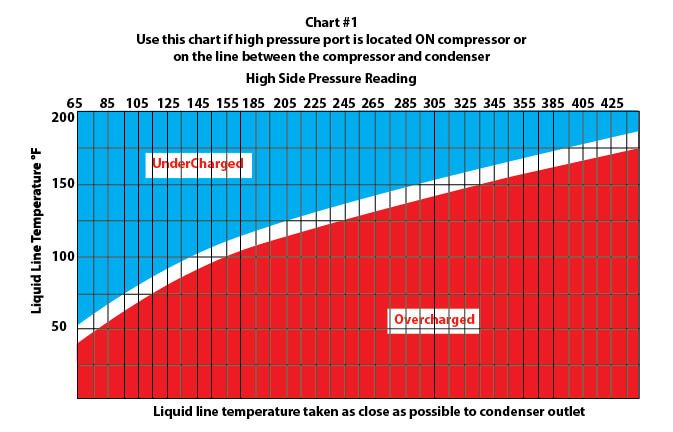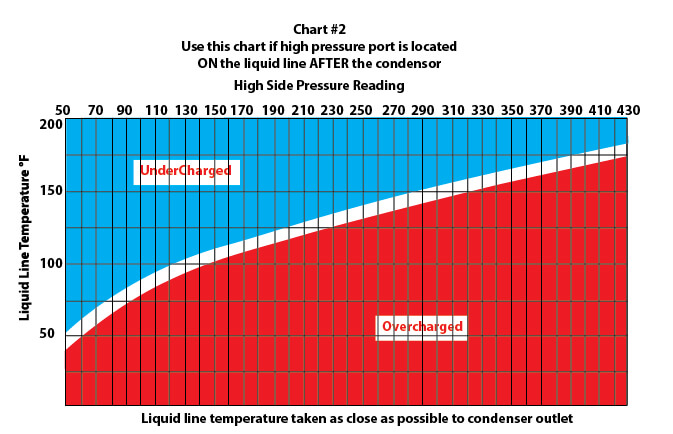Test AC system charge on an expansion valve system
Test AC system charge on expansion valve system with gauges
How to check the refrigerant charge on a car expansion valve AC system using pressure and temperature
You can’t determine AC system charge on an expansion valve system by measuring the evaporator inlet and outlet temperatures. By their very nature, expansion valves try to maintain the appropriate level of refrigerant even when the system is low. So measuring the inlet and outlet temperatures don’t work.
How to determine charge on an expansion valve system
First, conduct a maximum heat load temperature test. For information on how to perform that test, see this post.
Use gauges to determine car AC system charge
You’ll need a manifold gauge and a “K” style contact thermometer to conduct the

Meter and themocouple
pressure and temperature testtest. You CANNOT perform this test with just the single gauge in a recharge kit. You’ll be comparing the relationship between the high side pressure and the liquid line temperature.
Before conducting the test, run the system at MAX AC at 1,500 RPM for 5 mins to stabilize the system. Then record the pressures.
First, check for obstructions on airflow to the condenser. Correct bent fins and debris buildup
Next, measure the temperature at the evaporator outlet. If it is more than 10°F higher than the inlet temperature, the system may be low on charge or the expansion valve may be restricted.
Determine where the high pressure port is located
If the high pressure port is located on the compressor or on the discharge line between the compressor and the condenser, use Chart 1. If the high pressure port is located on the liquid line AFTER the condenser (on the way to the evaporator), use Chart 2.
Pressure symptom and diagnosis
Compare the liquid line temperature leaving the condenser to the pressure readings from your gauge

Expansion valve temperature pressure chart 1

Expansion valve temperature pressure chart 2
Suction Pressure High & Superheat Reading Low
• Defective Compressor
• Wrong expansion valve
• Poor Sensing Bulb Contact with Suction Line Refrigerant Overcharge or sensing bulb faulty
Suction Pressure Low & Superheat Reading High
• Low Refrigerant Charge
• Wrong expansion valve
• Vapor In the Liquid Line
• Plugged Filter/Drier
Suction Pressure Low & Superheat Reading Low
• Poor Airflow At Evaporator or Evaporator Coils Iced
• Excessive Oil In Evaporator
• Other expansion valve In System (rear cooling unit) Is Affecting The Other TXV
©, 2018 Rick Muscoplat
Posted on by Rick Muscoplat